
- •Warning and Disclaimer
- •Feedback Information
- •Trademark Acknowledgments
- •About the Author
- •About the Technical Reviewers
- •Dedication
- •Acknowledgments
- •Contents at a Glance
- •Contents
- •Icons Used in This Book
- •Command Syntax Conventions
- •Cisco’s Motivation: Certifying Partners
- •Format of the CCNA Exams
- •What’s on the CCNA Exams
- •ICND Exam Topics
- •Cross-Reference Between Exam Topics and Book Parts
- •CCNA Exam Topics
- •INTRO and ICND Course Outlines
- •Objectives and Methods
- •Book Features
- •How This Book Is Organized
- •Part I: LAN Switching
- •Part II: TCP/IP
- •Part III: Wide-Area Networks
- •Part IV: Network Security
- •Part V: Final Preparation
- •Part VI: Appendixes
- •How to Use These Books to Prepare for the CCNA Exam
- •For More Information
- •Part I: LAN Switching
- •“Do I Know This Already?” Quiz
- •Foundation Topics
- •Brief Review of LAN Switching
- •The Forward-Versus-Filter Decision
- •How Switches Learn MAC Addresses
- •Forwarding Unknown Unicasts and Broadcasts
- •LAN Switch Logic Summary
- •Basic Switch Operation
- •Foundation Summary
- •Spanning Tree Protocol
- •“Do I Know This Already?” Quiz
- •Foundation Topics
- •Spanning Tree Protocol
- •What IEEE 802.1d Spanning Tree Does
- •How Spanning Tree Works
- •Electing the Root and Discovering Root Ports and Designated Ports
- •Reacting to Changes in the Network
- •Spanning Tree Protocol Summary
- •Optional STP Features
- •EtherChannel
- •PortFast
- •Rapid Spanning Tree (IEEE 802.1w)
- •RSTP Link and Edge Types
- •RSTP Port States
- •RSTP Port Roles
- •RSTP Convergence
- •Edge-Type Behavior and PortFast
- •Link-Type Shared
- •Link-Type Point-to-Point
- •An Example of Speedy RSTP Convergence
- •Basic STP show Commands
- •Changing STP Port Costs and Bridge Priority
- •Foundation Summary
- •Foundation Summary
- •Virtual LANs and Trunking
- •“Do I Know This Already?” Quiz
- •Foundation Topics
- •Review of Virtual LAN Concepts
- •Trunking with ISL and 802.1Q
- •ISL and 802.1Q Compared
- •VLAN Trunking Protocol (VTP)
- •How VTP Works
- •VTP Pruning
- •Foundation Summary
- •Part II: TCP/IP
- •IP Addressing and Subnetting
- •“Do I Know This Already?” Quiz
- •Foundation Topics
- •IP Addressing Review
- •IP Subnetting
- •Analyzing and Interpreting IP Addresses and Subnets
- •Math Operations Used to Answer Subnetting Questions
- •Converting IP Addresses from Decimal to Binary and Back Again
- •The Boolean AND Operation
- •How Many Hosts and How Many Subnets?
- •What Is the Subnet Number, and What Are the IP Addresses in the Subnet?
- •Finding the Subnet Number
- •Finding the Subnet Broadcast Address
- •Finding the Range of Valid IP Addresses in a Subnet
- •Finding the Answers Without Using Binary
- •Easier Math with Easy Masks
- •Which Subnet Masks Meet the Stated Design Requirements?
- •What Are the Other Subnet Numbers?
- •Foundation Summary
- •“Do I Know This Already?” Quiz
- •Foundation Topics
- •Extended ping Command
- •Distance Vector Concepts
- •Distance Vector Loop-Avoidance Features
- •Route Poisoning
- •Split Horizon
- •Split Horizon with Poison Reverse
- •Hold-Down Timer
- •Triggered (Flash) Updates
- •RIP and IGRP
- •IGRP Metrics
- •Examination of RIP and IGRP debug and show Commands
- •Issues When Multiple Routes to the Same Subnet Exist
- •Administrative Distance
- •Foundation Summary
- •“Do I Know This Already?” Quiz
- •Foundation Topics
- •Link-State Routing Protocol and OSPF Concepts
- •Steady-State Operation
- •Loop Avoidance
- •Scaling OSPF Through Hierarchical Design
- •OSPF Areas
- •Stub Areas
- •Summary: Comparing Link-State and OSPF to Distance Vector Protocols
- •Balanced Hybrid Routing Protocol and EIGRP Concepts
- •EIGRP Loop Avoidance
- •EIGRP Summary
- •Foundation Summary
- •“Do I Know This Already?” Quiz
- •Foundation Topics
- •Route Summarization and Variable-Length Subnet Masks
- •Route Summarization Concepts
- •VLSM
- •Route Summarization Strategies
- •Sample “Best” Summary on Seville
- •Sample “Best” Summary on Yosemite
- •Classless Routing Protocols and Classless Routing
- •Classless and Classful Routing Protocols
- •Autosummarization
- •Classful and Classless Routing
- •Default Routes
- •Classless Routing
- •Foundation Summary
- •Advanced TCP/IP Topics
- •“Do I Know This Already?” Quiz
- •Foundation Topics
- •Scaling the IP Address Space for the Internet
- •CIDR
- •Private Addressing
- •Network Address Translation
- •Static NAT
- •Dynamic NAT
- •Overloading NAT with Port Address Translation (PAT)
- •Translating Overlapping Addresses
- •Miscellaneous TCP/IP Topics
- •Internet Control Message Protocol (ICMP)
- •ICMP Echo Request and Echo Reply
- •Destination Unreachable ICMP Message
- •Time Exceeded ICMP Message
- •Redirect ICMP Message
- •Secondary IP Addressing
- •FTP and TFTP
- •TFTP
- •MTU and Fragmentation
- •Foundation Summary
- •Part III: Wide-Area Networks
- •“Do I Know This Already?” Quiz
- •Foundation Topics
- •Review of WAN Basics
- •Physical Components of Point-to-Point Leased Lines
- •Data-Link Protocols for Point-to-Point Leased Lines
- •HDLC and PPP Compared
- •Looped Link Detection
- •Enhanced Error Detection
- •Authentication Over WAN Links
- •PAP and CHAP Authentication
- •Foundation Summary
- •“Do I Know This Already?” Quiz
- •Foundation Topics
- •ISDN Protocols and Design
- •Typical Uses of ISDN
- •ISDN Channels
- •ISDN Protocols
- •ISDN BRI Function Groups and Reference Points
- •ISDN PRI Function Groups and Reference Points
- •BRI and PRI Encoding and Framing
- •PRI Encoding
- •PRI Framing
- •BRI Framing and Encoding
- •DDR Step 1: Routing Packets Out the Interface to Be Dialed
- •DDR Step 2: Determining the Subset of the Packets That Trigger the Dialing Process
- •DDR Step 3: Dialing (Signaling)
- •DDR Step 4: Determining When the Connection Is Terminated
- •ISDN and DDR show and debug Commands
- •Multilink PPP
- •Foundation Summary
- •Frame Relay
- •“Do I Know This Already?” Quiz
- •Foundation Topics
- •Frame Relay Protocols
- •Frame Relay Standards
- •Virtual Circuits
- •LMI and Encapsulation Types
- •DLCI Addressing Details
- •Network Layer Concerns with Frame Relay
- •Layer 3 Addressing with Frame Relay
- •Frame Relay Layer 3 Addressing: One Subnet Containing All Frame Relay DTEs
- •Frame Relay Layer 3 Addressing: One Subnet Per VC
- •Frame Relay Layer 3 Addressing: Hybrid Approach
- •Broadcast Handling
- •Frame Relay Service Interworking
- •A Fully-Meshed Network with One IP Subnet
- •Frame Relay Address Mapping
- •A Partially-Meshed Network with One IP Subnet Per VC
- •A Partially-Meshed Network with Some Fully-Meshed Parts
- •Foundation Summary
- •Part IV: Network Security
- •IP Access Control List Security
- •“Do I Know This Already?” Quiz
- •Foundation Topics
- •Standard IP Access Control Lists
- •IP Standard ACL Concepts
- •Wildcard Masks
- •Standard IP ACL: Example 2
- •Extended IP Access Control Lists
- •Extended IP ACL Concepts
- •Extended IP Access Lists: Example 1
- •Extended IP Access Lists: Example 2
- •Miscellaneous ACL Topics
- •Named IP Access Lists
- •Controlling Telnet Access with ACLs
- •ACL Implementation Considerations
- •Foundation Summary
- •Part V: Final Preparation
- •Final Preparation
- •Suggestions for Final Preparation
- •Preparing for the Exam Experience
- •Final Lab Scenarios
- •Scenario 1
- •Scenario 1, Part A: Planning
- •Solutions to Scenario 1, Part A: Planning
- •Scenario 2
- •Scenario 2, Part A: Planning
- •Solutions to Scenario 2, Part A: Planning
- •Part VI: Appendixes
- •Glossary
- •Answers to the “Do I Know This Already?” Quizzes and Q&A Questions
- •Chapter 1
- •“Do I Know This Already?” Quiz
- •Chapter 2
- •“Do I Know This Already?” Quiz
- •Chapter 3
- •“Do I Know This Already?” Quiz
- •Chapter 4
- •“Do I Know This Already?” Quiz
- •Chapter 5
- •“Do I Know This Already?” Quiz
- •Chapter 6
- •“Do I Know This Already?” Quiz
- •Chapter 7
- •“Do I Know This Already?” Quiz
- •Chapter 8
- •“Do I Know This Already?” Quiz
- •Chapter 9
- •“Do I Know This Already?” Quiz
- •Chapter 10
- •“Do I Know This Already?” Quiz
- •Chapter 11
- •“Do I Know This Already?” Quiz
- •Chapter 12
- •“Do I Know This Already?” Quiz
- •Using the Simulation Software for the Hands-on Exercises
- •Accessing NetSim from the CD
- •Hands-on Exercises Available with NetSim
- •Scenarios
- •Labs
- •Listing of the Hands-on Exercises
- •How You Should Proceed with NetSim
- •Considerations When Using NetSim
- •Routing Protocol Overview
- •Comparing and Contrasting IP Routing Protocols
- •Routing Through the Internet with the Border Gateway Protocol
- •RIP Version 2
- •The Integrated IS-IS Link State Routing Protocol
- •Summary of Interior Routing Protocols
- •Numbering Ports (Interfaces)

Foundation Summary 135
Foundation Summary
The “Foundation Summary” section lists the most important facts from the chapter. Although this section does not list everything that will be on the exam, a well-prepared CCNA candidate should at a minimum know all the details in each Foundation Summary before taking the exam.
The thought process used to answer questions about the number of hosts and subnets in a network, based on a network number and a subnet mask, is summarized in the following list:
Step 1 Identify the structure of the IP address.
Step 2 Identify the size of the network part of the address based on Class A, B, and C rules.
Step 3 Identify the size of the host part of the address based on the number of binary 0s in the mask.
Step 4 The size of the subnet part is what’s “left over”; mathematically, it is 32
– (number of network + host bits).
Step 5 Declare the number of subnets, which is 2number-of-subnet-bits – 2.
Step 6 Declare the number of hosts per subnet, which is 2number-of-host-bits – 2.
Here’s a formal definition of the “algorithm” to find the first and last IP addresses in a subnet when you know the subnet number and broadcast addresses:
■For the first valid IP address, copy the subnet number, but add 1 to the fourth octet.
■For the last valid IP address, copy the broadcast address, but subtract 1 from the fourth octet.
■The range of valid IP addresses starts with the first number and ends with the last.
To find the subnet number, perform a Boolean AND between the address and the subnet mask, as shown in Table 4-36.
Table 4-36 Bitwise Boolean AND Example
|
Decimal |
Binary |
|
|
|
Address |
150.150.2.1 |
1001 0110 1001 0110 0000 0010 0000 0001 |
|
|
|
Mask |
255.255.255.0 |
1111 1111 1111 1111 1111 1111 0000 0000 |
|
|
|
Result of AND |
150.150.2.0 |
1001 0110 1001 0110 0000 0010 0000 0000 |
|
|
|
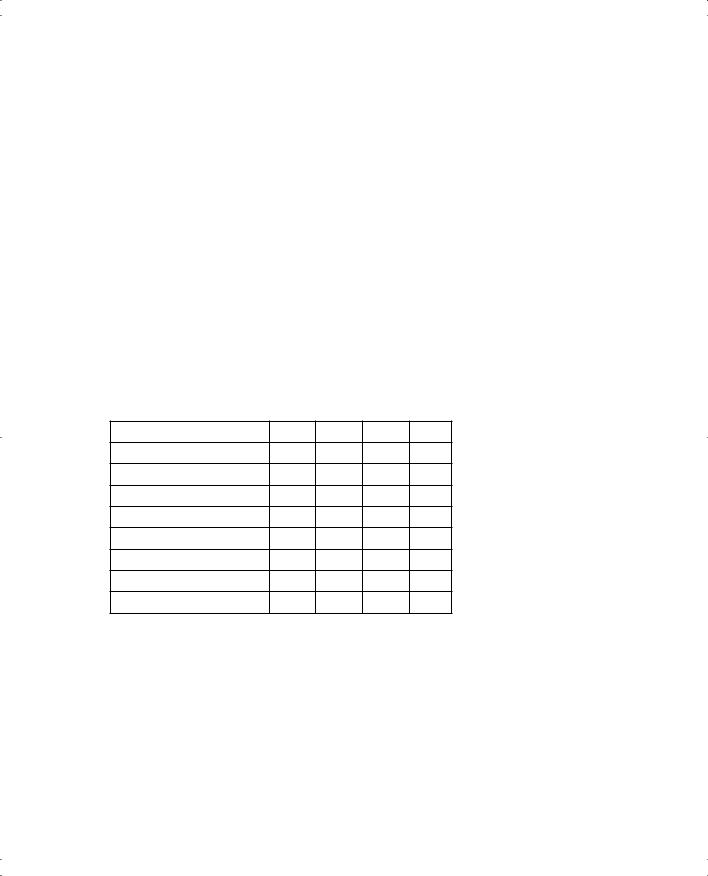
136 Chapter 4: IP Addressing and Subnetting
To find the subnet broadcast address, take the subnet number in binary and change all the host bits to binary 1s.
The following three-step process lists all the subnet numbers of a network. This process refers to Table 4-37.
Step 1 Write down the network number and subnet mask in the first two rows of the subnet list chart.
Step 2 Write down the network number in the third row. This is the zero subnet, which is one of the two reserved subnets.
Step 3 Do the following two tasks, stopping when the next number you would write down in the interesting column is 256. (But don’t write it down— it’s invalid.)
(a)Copy all three uninteresting octets from the previous line.
(b)Add the magic number to the previous interesting octet, and write it down as the value of the interesting octet.
Table 4-37 Subnet List Chart: 130.4.0.0/255.255.252.0
Octet |
1 |
2 |
3 |
4 |
Network Number
Mask
Subnet Zero
First Subnet
Next Subnet
(Skipping Many Subnets)
Last Subnet
Broadcast Subnet
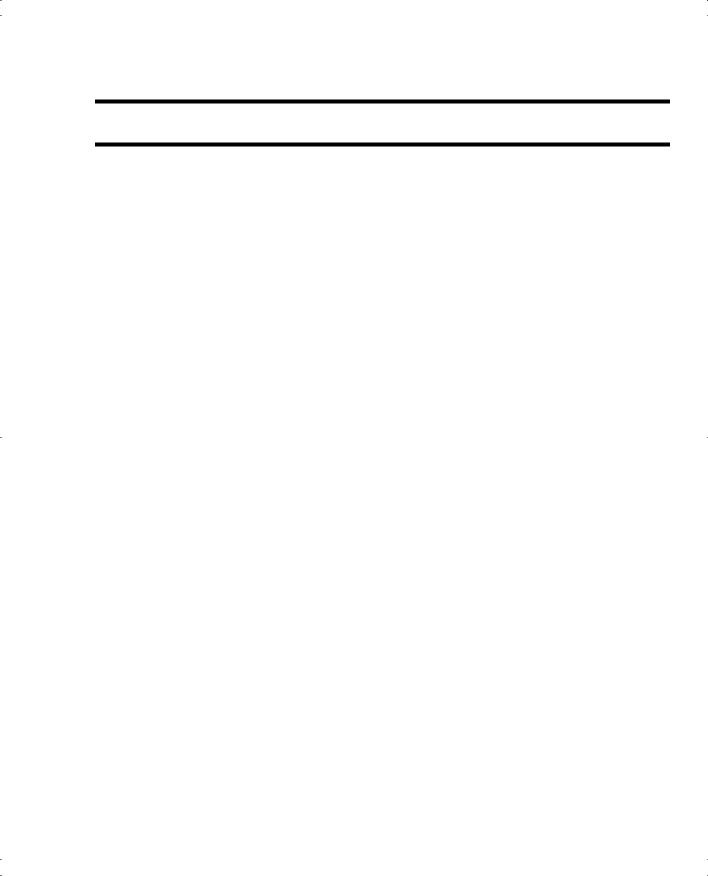
Q&A 137
Q&A
As mentioned in the Introduction, you have two choices for review questions. The following questions give you a bigger challenge than the exam because they are open-ended. By reviewing with this more-difficult question format, you can exercise your memory better and prove your conceptual and factual knowledge of the topics covered in this chapter. The answers to these questions are found in appendix A.
If you want more questions and practice with subnetting, you have a couple of options. You can look at the chapter on the CD titled “Subnetting Practice: 25 Subnetting Questions.”
Also, if you bought the two-book set, and you already own the CCNA INTRO Exam Certification Guide, you can look at the questions at the end of Chapter 4, “Fundamentals of WANs,” of that book. Chapter 4 of that book repeats what is discussed in this chapter. However, more than half of the questions at the end of that chapter are different from the ones in this chapter, so you can get some more practice.
For more practice with exam-like question formats, including multiple-choice questions and those using a router simulator, use the exam engine on the CD.
1.Name the parts of an IP address.
2.Define subnet mask. What do the bits in the mask whose values are binary 0 tell you about the corresponding IP address(es)?
3.Given the IP address 10.5.118.3 and the mask 255.255.0.0, what is the subnet number?
4.Given the IP address 190.1.42.3 and the mask 255.255.255.0, what is the subnet number?
5.Given the IP address 140.1.1.1 and the mask 255.255.255.248, what is the subnet number?
6.Given the IP address 167.88.99.66 and the mask 255.255.255.192, what is the subnet number?
7.Given the IP address 10.5.118.3 and the mask 255.255.0.0, what is the broadcast address?
8.Given the IP address 190.1.42.3 and the mask 255.255.255.0, what is the broadcast address?
9.Given the IP address 140.1.1.1 and the mask 255.255.255.248, what is the broadcast address?

138Chapter 4: IP Addressing and Subnetting
10.Given the IP address 167.88.99.66 and the mask 255.255.255.192, what is the broadcast address?
11.Given the IP address 10.5.118.3 and the mask 255.255.0.0, what are the assignable IP addresses in this subnet?
12.Given the IP address 190.1.42.3 and the mask 255.255.255.0, what are the assignable IP addresses in this subnet?
13.Given the IP address 140.1.1.1 and the mask 255.255.255.248, what are the assignable IP addresses in this subnet?
14.Given the IP address 167.88.99.66 and the mask 255.255.255.192, what are the assignable IP addresses in this subnet?
15.Given the IP address 10.5.118.3 and the mask 255.255.255.0, what are all the subnet numbers if the same (static) mask is used for all subnets in this network?
16.How many IP addresses can be assigned in each subnet of 10.0.0.0, assuming that a mask of 255.255.255.0 is used? If the same (static) mask is used for all subnets, how many subnets are there?
17.How many IP addresses can be assigned in each subnet of 140.1.0.0, assuming that a mask of 255.255.255.248 is used? If the same (static) mask is used for all subnets, how many subnets are there?
18.You design a network for a customer who wants the same subnet mask on every subnet. The customer will use network 10.0.0.0 and needs 200 subnets, each with 200 hosts maximum. What subnet mask would you use to allow the most growth in subnets? Which mask would work and would allow for the most growth in the number of hosts per subnet?
19.Refer to Figure 4-5. Fred is configured with IP address 10.1.1.1. Router A’s Ethernet interface is configured with 10.1.1.100. Router A’s serial interface uses 10.1.1.101. Router B’s serial interface uses 10.1.1.102. Router B’s Ethernet uses 10.1.1.200. The web server uses 10.1.1.201. Mask 255.255.255.192 is used in all cases. Is anything wrong with this network? What is the easiest thing you could do to fix it? You may assume any working interior routing protocol.
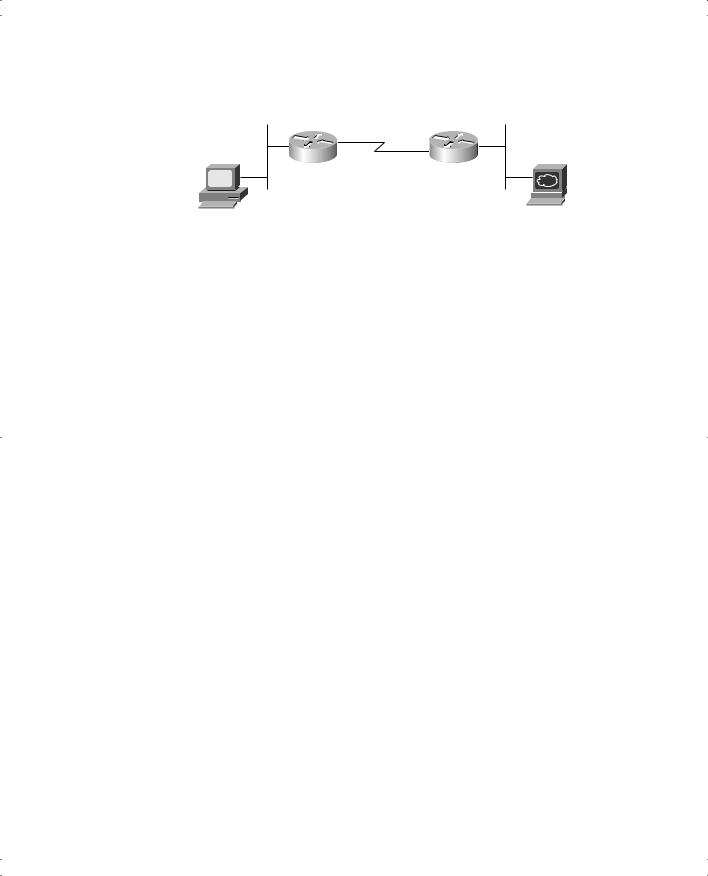
Q&A 139
Figure 4-5 Sample Network for Subnetting Questions
A B
Web
Fred
20.Refer to Figure 4-5. Fred is configured with IP address 10.1.1.1, mask 255.255.255.0. Router A’s Ethernet is configured with 10.1.1.100, mask 255.255.255.224. Router A’s serial interface uses 10.1.1.129, mask 255.255.255.252. Router B’s serial interface uses
10.1.1.130, mask 255.255.255.252. Router B’s Ethernet uses 10.1.1.200, mask 255.255.255.224. The web server uses 10.1.1.201, mask 255.255.255.224. Is anything wrong with this network? What is the easiest thing you could do to fix it? You may assume any working interior routing protocol.
21.Refer to Figure 4-5. Fred is configured with IP address 10.1.1.1, mask 255.255.255.0. Router A’s Ethernet is configured with 10.1.1.100, mask 255.255.255.224. Router A’s serial interface uses 10.1.1.129, mask 255.255.255.252. Router B’s serial interface uses 10.1.1.130, mask 255.255.255.252. Router B’s Ethernet uses 10.1.1.200, mask 255.255.255.224. The web server uses 10.1.1.201, mask 255.255.255.224. Is anything wrong with this network? What is the easiest thing you could do to fix it? You may assume any working interior routing protocol.
22.Refer to Figure 4-5. Fred is configured with IP address 10.1.1.1, mask 255.255.255.240. Router A’s Ethernet is configured with 10.1.1.2, mask 255.255.255.240. Router A’s serial interface uses 10.1.1.129, mask 255.255.255.252. Router B’s serial interface uses 10.1.1.130, mask 255.255.255.252. Router B’s Ethernet uses 10.1.1.200, mask 255.255.255.128. The web server uses 10.1.1.201, mask 255.255.255.128. Is anything wrong with this network? What is the easiest thing you could do to fix it? You may assume any working interior routing protocol.
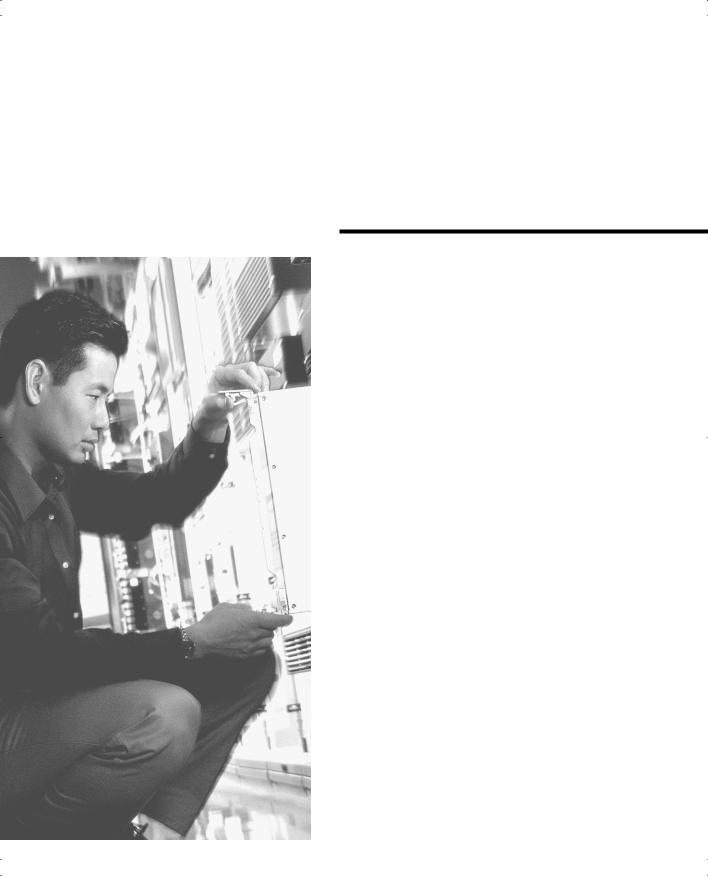
This chapter covers the following subjects:
■Configuring and Testing Static Routes
■Distance Vector Concepts
■Configuring RIP and IGRP
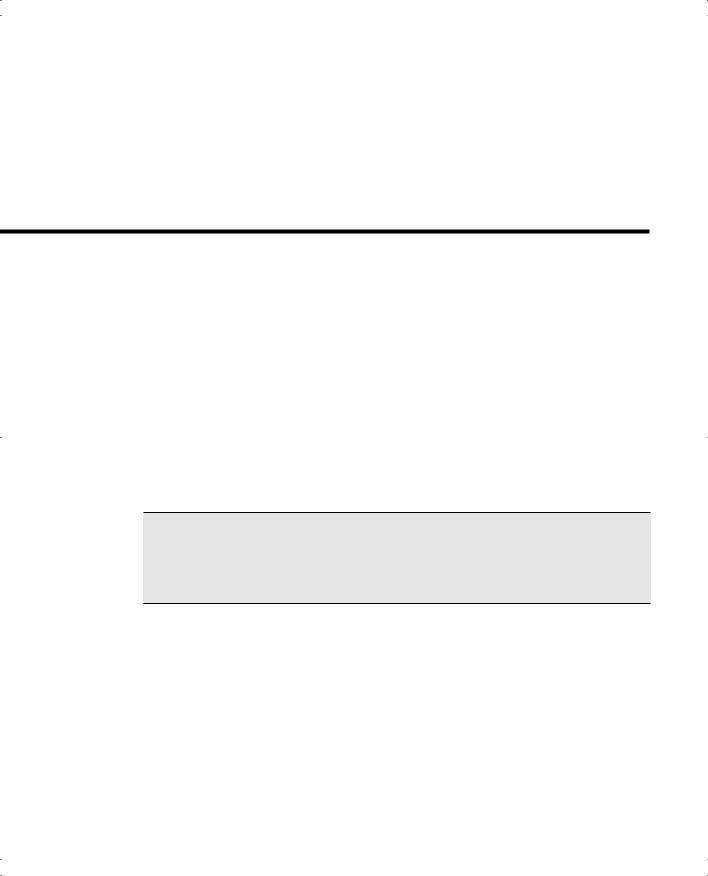
C H A P T E R 5
RIP, IGRP, and Static Route
Concepts and Configuration
Routers forward IP packets based on the destination IP address in the IP packet header. They compare the destination address to the routing table with the hope of finding a matching entry—an entry that tells the router where to forward the packet next. If the router does not match an entry in the routing table, and no default route exists, the router discards the packet. Therefore, having a full and accurate routing table is important.
Chapters 5, 6, “OSPF and EIGRP Concepts and Configuration,” and 7, “Advanced Routing Protocol Topics,” cover the concepts and configuration required to fill a router’s routing table. Cisco expects CCNAs to demonstrate a comfortable understanding of the logic behind the routing of packets and the different but related logic behind routing protocols—the protocols used to discover routes. To fully appreciate the nuances of routing protocols, you need a thorough understanding of routing—the process of forwarding packets. If you bought both my CCNA books, refer to Chapter 5, “Fundamentals of IP,” of CCNA INTRO Exam Certification Guide for a brief review.
AUTHOR’S NOTE If you happen to not be reading the INTRO Exam Certification Guide as well, you may want to refer to appendix D, Comparisons of Dynamic Routing Protocols, for a brief overview of a few other routing protocols. For those of you who are preparing for the CCNA exam and are using the INTRO Exam Certification Guide as well, those small details are covered in the other book.
Before diving into routing protocol details, this chapter starts with a short section about how to configure static routes. Thinking through static route configuration can help people new to routing better understand routing and routing protocols. Following that, the text covers the most important topics in this chapter—distance vector concepts, Routing Information Protocol (RIP), and Interior Gateway Routing Protocol (IGRP).
Chapter 6 covers the most basic concepts and configuration of Open Shortest Path First (OSPF) and Enhanced IGRP (EIGRP). Chapter 7 covers several advanced topics related to routing protocols.
